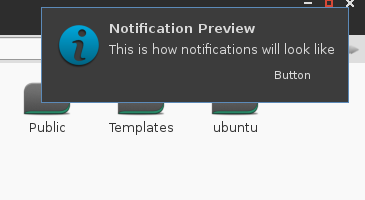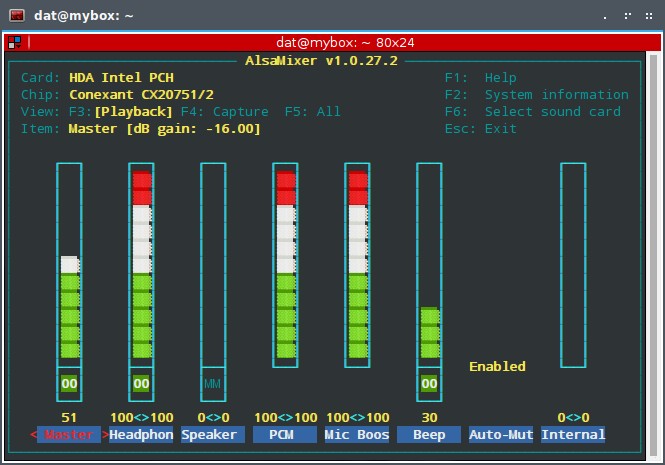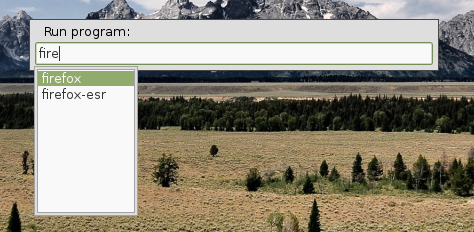ESSENTIAL OPERATING SYSTEM FEATURES
Common features of an Operating System
Essential operating system features
- Login manager
- Notification mechanism
- Audio driver
- Windows fonts
- App got taking screenshot
- App for locking screen
- App launcher
1. Login manager
A login manager asks users for their credentials, lets users select which session they want to use… then transfers users to their GUI accordingly.
lightdm
sudo apt-get install lightdm lightdm-gtk-greeter
lightdm is a lightweight yet functional login manager.
The lightdm-gtk-greeter is for handling the gtk theme of Lightdm (the other theme handlers are: lightdm-kde-greeter, lightdm-unity-greeter…).
My favorite Lightdm gtk theme the one from hhh’s here on Crunchbang forums, I have been using it from then. Just change the background and it will never get old:
https://crunchbang.org/forums/viewtopic.php?pid=422724
The below is totally unnecessary, but it is nice to having another option:
I used to have a bad experience with slim login manager suddenly refusing to work after an update and it only gave me with a blank black screen. Although it was just a minor bug and I was easy to get slim to work again, I had to find another work around. There was a choice of not using any loggin manager.
geany ~/.profile
We will add some lines into ~/.profile file in your home folder:
# startx after login
if [[ -z $DISPLAY ]] && [[ $(tty) = /dev/tty1 ]]; then
exec startx
fi
Now as soon as you have entered your login credential, the GUI will be launched.
2. Notification mechanism
Your operating system needs a way to notify you when an event happens (an email is received, your battery is low, a download is finished…)
sudo apt-get install xfce4-notifyd
Any program that needs a desktop notification (Thunderbird, Transmission…) will have a tool for displaying their messages (in a form of bubbles popping out on your desktop)
To configure how would the notification will be like:
xfce4-notifyd-config

3. Audio driver
- Alsa will give you the audio driver
- PulseAudio will give you multiple choices over the output.
I recommend to use them both on your system. I used to hate PulseAudio, but after having some USB DAC, PulseAudio really makes my life easier.
sudo apt-get install alsa-base alsa-utils pulseaudio pavucontrol
You should have the sound working immediately, if not, follow by this command:
alsactl init
In your terminal using the command Alsamixer to open the mixer and pressing “SPACE” key to unmute all the channels.
alsamixer

4. Windows fonts
Lacking windows fonts, some websites and documents will not display nicely as expected (Especially documents received from someone using Windows). To install Windows fonts:
sudo apt-get install ttf-mscorefonts-installer
(These fonts are free).
5. App got taking screenshot
Printing screen/ screen capturing program: scrot
To use scrot, in a terminal window, type:
scrot -d 5 -c

It will take a screen shot after 5 seconds and display the countdown (-d for delaying and -c for displaying the countdown).
The captured image will be saved in your home folder.
This scrot command should be bound to the PRINT SCREEN key on your keyboard for convenience. I have configured that in the rc.xml, and the entry for it looks like this:
<keybind key="Print">
<action name="Execute">
<command>scrot -cd1</command>
</action>
</keybind>
6. App for locking screen
To lock screen with light-locker:
Locking screen for me is a must-have feature since I often works at various places and my normal working section often takes too long to be able to always attend at my laptop.
I choose light-locker for its nature of lightweight and simple.
sudo apt-get install light-locker
Bind Windows + l these keys to the following command:
$ light-locker-command -l
in my rc.xml file. The entry looks like this:
<keybind key="W-l">
<action name="Execute">
<startupnotify>
<enabled>true</enabled>
<name>lock</name>
</startupnotify>
<command>light-locker-command -l</command>
</action>
</keybind>
7. Apps launcher
Quickly launch a program with gmrun:
gmrun give you the ability to quickly launch a program or run a command by just using your keyboard. To make it is even easier, it has an auto-complete feature that will recommend you a list of commands that have already installed in your system based on what you have type:

To install:
sudo apt-get install gmrun
In my my rc.xml file, the gmrun have been bound into “Windows key + R”. Press these combination keys and gmrun window should be ready.
Already “equipped” with a right-click menu and a bunch of shortcut keys, now with this a launcher the convenience of launching a program of Openbox system is top notch.
Here is how the key binding entry for gmrun looks like in my rc.xml:
</keybind>
<keybind key="W-r">
<action name="Execute">
<startupnotify>
<enabled>true</enabled>
<name>gmrun</name>
</startupnotify>
<command>gmrun</command>
</action>
</keybind>